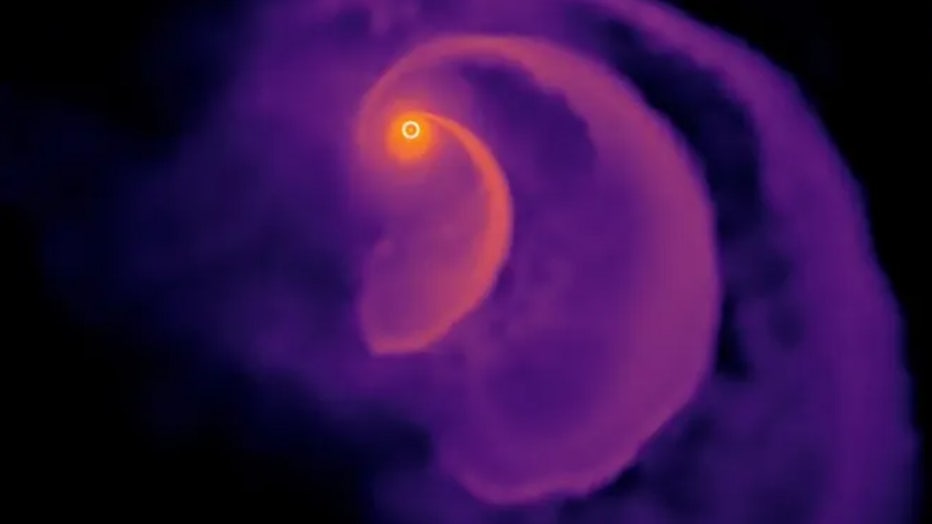Pass the bib: Watch as study simulates black holes eating galaxy stars like messy toddlers

Star meets black hole
Watch an intermediate-mass black hole take a bite of a wayward star and then fling the leftovers across the galaxy. (Credit: Fulya K?ro?lu/Northwestern University)
These black holes are like toddlers eating Sunday brunch – they take a few bites, then fling the remains across the galaxy, a new study has found.
Astrophysicists say they modeled black holes of varying masses in simulations and then hurled stars the size of our sun past them to see what might happen in a Northwestern University-led study.
Researchers in the study said intermediate-mass black holes have remained elusive. Yet if they did exist, the outcome could be seen in these new hydrodynamic 3D computer simulations, according to Fulya Kıroğlu, an astrophysics graduate student at Northwestern’s Weinberg College of Arts and Sciences who led the study.
"We can calculate specifically which particle is bound to the star and which particle is disrupted (or no longer bound to the star)," Kıroğlu said.
NASA SEEKS HELP EXPLORING THE UNIQUE SOUNDS OF OUTER SPACE

FILE - Remnants of a wayward star, circling around a black hole (Fulya Kıroğlu/Northwestern University)
Kıroğlu said she discovered when a star approaches an intermediate-mass black hole, it will become caught in the black hole’s orbit. After that, the black hole begins its lengthy and violent meal, following each lap of the star. After each passage, remnants fly across the galaxy at searing speeds, as the black hole chews away until nothing is left but a dense core.
Kıroğlu said it's amazing that the star didn't fully rip apart before the completion of as many as five laps before finally being ejected from the orbit.
"Some stars might get lucky and survive the event," she added. "The ejection speed is so high that these stars could be identified as hyper-velocity stars, which have been observed at the centers of galaxies."
Kıroğlu said these new simulations hint at the unknown behaviors of intermediate-mass black holes. They also provide astronomers with new clues to help pinpoint them.
"We obviously cannot observe black holes directly because they don’t emit light," Kıroğlu said.
Instead, Kıroğlu said they must examine the interactions between black holes and their environments.
"We found that stars undergo multiple passages before being ejected," she added. "After each passage, they lose more mass, causing a flair of light as it's ripped apart. Each flare is brighter than the last, creating a signature that might help astronomers find them."
'BIZARRE GAME OF GALACTIC BILLIARDS' CREATES RUNAWAY BLACK HOLE LEAVING TRAIL OF STARS IN ITS WAKE

Remnants of a wayward star, circling around a black hole (Fulya Kıroğlu/Northwestern University)
Kıroğlu said the presence of intermediate-mass black holes is still debated as astrophysicists have yet to find indisputable observational evidence.
"Astrophysicists have uncovered evidence that they exist, but that evidence can often be explained by other mechanisms," Kıroğlu said. "For example, what appears to be an intermediate-mass black hole might actually be the accumulation of stellar-mass black holes."
The size of intermediate-mass black holes could range anywhere from 10 to 10,000 times more massive than stellar remnant black holes, which are about three to 10 times the mass of our sun. However, their size is not nearly as massive as supermassive black holes lurking in the centers of galaxies and millions to billions times the mass of our sun, researchers said.
Following this study, Kıroğlu said she plans to simulate different types of stars to explore their interactions with black holes.

